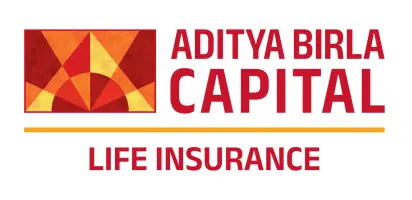Various Components for Income Tax Calculation
House rent allowance (HRA) Under Section 10 (13A) of the Income Tax Act, 1961, there is a provision for HRA (House Rent Allowance) exemption. This tax benefit is available to the salaried employees who are not staying in their homes and have to pay rent for their accommodation. By claiming the HRA, they diminish the amount of their taxes- partially or wholly. But those who are not living in rented accommodation should pay the requisite tax on HRA.
Leave travel allowance (LTA) Under the Income Tax Act 1961, there is a provision for Leave Travel Allowance Tax (LTA). According to this provision, if the salaried class employee receives a travel allowance from his/her employer for travelling on leave, then, that travel allowance will not be included in the taxable salary income. LTA exemption is only applicable on the actual costs i.e. rail fare, bus fare, etc. The other travel expenses i.e. hotel accommodation, restaurant, local transportation, etc. are not eligible for LTA exemption.
Standard deduction Salaried employees, irrespective of any category, get the benefit of standard deduction while filing their income tax returns. It is a flat deduction of INR 50,000 from the total salary received by an employee in a financial year. A change in jobs doesn’t impact the amount of standard deduction as this is a fixed exemption that is given to each salaried employee.
Deduction against loan (home loan, personal loan, car loan) Under Section 80C of the Income Tax, a home loan is considered eligible for a tax deduction while filing an income tax return. Salaried employees don’t get tax benefits on car loans as this is an expenditure on comfort. However, businessmen and self-employed individuals can get tax deductions against car loans as the car is considered essential for their business purposes. In most cases, there aren’t any tax benefits on the personal loan, but when taken for construction of the residential property or business expansion or buying assets, taxpayers can enjoy exemptions.
Assessment year The assessment year comes after the financial year. Whatever income is earned by the individuals in the financial year is assessed and taxed in the assessment year. Both financial year and assessment year begin on April 1 and end on March 31. But the assessment year is the next year of the financial year. If the financial year is 2022-23, then the assessment year will be 2023-24.
Salary break up Salary break up includes the following components:
- Basic salary
- CTC (Cost to Company)
- Gross salary
- Provident Fund (PF)
- Public Provident Fund (PPF)
- Insurance
- Reimbursements
- Allowances i.e. HRA, LTA, Conveyance allowance, dearness allowance and other allowances
- Gratuity
Income from interest Under Section 80TTA of the Income Tax act, if the interest income on a savings bank account is INR 10,000 or less than INR 10,000, then, the tax deduction can be claimed by the taxpayer. But if the interest income exceeds the amount of INR 10,000, then, the tax is imposed as per the slab rates. Under Section 80TTB, senior citizens can claim a tax deduction of INR 50000 on the income from interest.
Rental income If the taxpayer is earning rental income on the self-occupied house property, then, the rental income is considered income from the house property. The rental income is included in the taxable income of the taxpayer. The tax is imposed on the income from house property (rental income) as per the slab rates of income tax.
Capital gains As per the Income Tax Act of 1961, the income earned from the capital assets i.e. bonds, mutual funds, and shares is called the capital gains. These capital gains differ on the basis of time periods but they are included in the taxpayer income and the tax amount is deducted according to the slab rates of income tax.
Income from digital assets To discourage the transaction of digital assets like cryptocurrencies, a flat 30% tax has been imposed by the Finance Minister on the earned income from virtual assets regardless of short-term holding and long-term holding. There is no provision for a tax deduction and exemption in any way. If any taxpayer gifts digital assets to any person, then, the gifting will also be taxed at a TDS of 1%.
Income Tax Calculator - Frequently Asked Questions
The minimum value among the following three options is considered while HRA tax exemption in the income tax –
- The actual HRA received by the employee
- The actual rent amount paid minus 10% of the salary
- 40% of salary ( 50% of salary if house situated in Mumbai
- Salary for this purpose shall include basic salary and DA
Follow the steps given below to calculate the income tax on arrear salary – Step 1 Find out the difference between tax liability on total income (including arrear) and total income (excluding arrears) Step 2 Now find out the difference between the tax liability on total income (including arrear) and total income (excluding arrear) of the year to which the arrear belongs Step 3 If the tax liability on arrear in step 2 is higher than step 1, there shall be no tax relief on arrear. However, if it is lower, the extra tax liability shown in step 1 will be relieved
Kisan Vikas Patra investment is taxable under the income from other sources. It offers no tax deductions and is taxable at normal rates. 10% TDS is charged on the interest received on the investment.
Senior citizens are those people who are above 60 years of age and less than 80 years. From 1st April of the financial year, the age is calculated.
If an investor makes short-term capital gains (STCG), the profit earned is taxable at 15% and for long-term capital gains (STCG), the profit is taxable at 10% irrespective of the tax slab one falls in.
Source: https://www.incometax.gov.in/iec/foportal/help/individual/return-applicable-1
ADV/6/22-23/589


